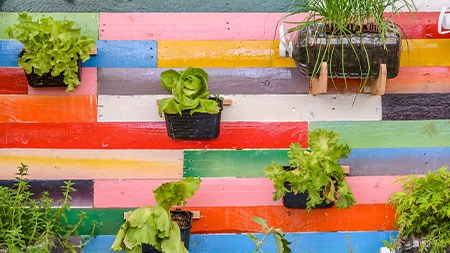Landscapers are only for the wealthy who have money to burn, right? Well no, actually. A good landscaper can not only transform your garden into the paradise of your dreams, he can also save you a lot of money.
As with any service, it is always advisable to get a couple of quotes, but if you are looking for someone to turn your garden into a something extraordinary and keep it looking that way for years to come, there are a number of questions you should ask before making a decision.
Damon Johnson, who has owned Terra Firma Landscapers in Gauteng for the past nine years, says that anyone who is thinking of hiring a landscaper should consider the following:
• Listen to the questions being asked…if the questions are more financially based than product and client preference based, then you know that the landscaper is ‘chasing the money’ rather than helping you chase your dream supplying the customer with the garden they want.
• Although budget is important, it should not be paramount. It is also important for clients to connect with their landscaper as the translation of the client brief from planning to planting will be more accurately visualised.
• Try to assess if the landscaper has good plant knowledge and whether they have practical experience. Those who don’t will tend to design according to what a gardening book tells them and this is not always the right approach. Landscapers with practical experience will know how the plants used grow and how they will cope with local conditions. In other words, those who have practical landscaping experience often have far more to offer than those who go strictly according to the book.
It pays to remember that a landscaper generally saves the property owner money because professionals buy their plants from wholesale nurseries. However, it is not only the cost of the plants that racks up the bills. “Many clients waste vast sums of money by trying to create gardens themselves,” says Johnson. “They often buy plants that are not suitable for the area in which they are planted to the conditions of the area in which they live. Planting in the wrong soil type, placing frost tender plants in black frost areas, planting shade plants in full sun areas and dry zone plants in high water zone areas are just a few common mistakes and of course, once planted these will fail to thrive and will often die.”
Johnson says that most landscapers have a fair knowledge of horticulture, pests and diseases and know the best way of maintaining plants in tip-top condition and treating them should the need arise. They also know the boundaries within which they are working and just how far they can push those boundaries without sacrificing aesthetics or putting the plants at risk.
Designing a garden is not for the faint hearted and landscapers spend many hours on this crucial element. Once completed, the concept plan is translated into a ground plan (an aerial or top view) which allows the landscaper to work out how the design will fit into the space available as well as enabling them to see how many plants (soft landscaping) and how much paving, retaining walls (hard landscaping) will be needed to complete the job. It is worth noting,[without a site plan, it is all but impossible to provide a full and accurate quotation.
Johnson also says that the landscaper should provide homeowners with pictures of all the plants to be used and careful instructions for their care and maintenance along with the ground plan. He adds that clients need to know what they are getting, how the plants work together and most importantly, how to look after them. This is important for the client’s security and ensures they get exactly what was quoted for. Sometimes the plants shown are not available or are out of season but suitable alternatives should be discussed and approved by the client before the landscaper goes ahead.


